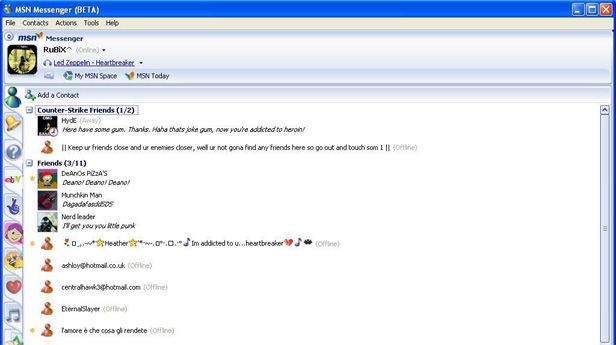A very important pillar from the last 15 years in the world of Internet-related software is saying its final goodbye. Following the announcement made several months ago after Microsoft purchased Skype, Windows Live Messenger closed its doors and became part of Skype yesterday. Fourteen years after its launch, and after having established the concept of online instant messaging across the globe, the time has come for it to say goodbye.

MSN Messenger was born in 1999 during a time when the world was experiencing a boom in telecommunications. The old dial-up modems gave way to bandwidth, and along with the arrival of the new millenium also came the widespread introduction of Internet on desktop computers. They transformed from simple tools for work or gaming platforms for the most experienced user into complete entertainment centers constantly connected to the web.
Around that time, what people were using were chat channels: the days of the mIRC. The use of cellphones was also becoming an established reality, although the high cost of SMS messages still didn’t allow people to maintain long conversations with others simply because one’s phone bill would skyrocket if they weren’t careful. Messenger was very successful because of all this as it allowed you to maintain long conversations with your friends. Microsoft was in the right place at the right time.

The following versions of Windows all contained new versions of Messenger, which were given new features allowing for greater window customization, managing of contacts, and the addition of advertising banners within the program. The product family line also grew with time. So, the version that would come preinstalled on Windows XP was called Windows Messenger, while the more complete version that had to be installed afterwards was called MSN Messenger. What’s more, in 2004 a new browser-based version of the program emerged called MSN Web Messenger. There was even a version released (very limited, of course) for Mac OS!
The program’s peak occurred when version 6.0 was released, which was an entirely redone version that featured user avatars, emoticons, and a completely revamped interface. Microsoft had always been very reluctant to sharing and opening up its protocol to third-parties, but even still, a limitless amount of plugins and add-ons were developed to enrich the user experience, mostly by Messenger Plus!, and included options such as ad-blocking, and the ability to open various user sessions at the same time. However, Linux users had to look for their own alternatives, and programs such as aMSN and Emesene appeared.

Version 8.0 brought another great change, which was that the name of the service changed to Windows Live Messenger towards the end of 2005. From there, it expanded into the territories of Windows Phone, iOS, and Android, and was capable of integrating with other Microsoft services such as Skydrive, Xbox 360 accounts, and Yahoo! Messenger. As a beginning to the end, services such as Twitter and Facebook became an enticing alternative means of communication. In fact, the latter, in addition to allowing you to sync your contacts from the latest versions of the Microsoft service, released its own chat application.
But nothing lasts forever, and although the service enjoyed good health throughout almost all of the last decade, the ultimate cause of its fall is without a doubt the use of smartphones. When 3G communication and unlimited service plans appeared for smartphones, a more practical and versatile way of communicating with friends than that of Microsoft emerged. Ultimately, Messenger was given the final blow as instant messaging on smartphones took off due to WhatsApp and other similar apps. To top it all off, services such as GTalk and even Skype finished digging its grave.
Because of all this, the coming to an end of the cycle was inevitable, and the best way to recover Microsoft’s $8.5 million purchase of Skype was to condense all their communication services into one. Starting today, those who want to continue using Windows Live Messenger will have to do so through Skype. For the time being, the service will continue to work for a little while longer. However, a warning message will appear encouraging you to install Skype, which would then uninstall Messenger in the process. If you ignore the warning, you’ll be able to keep using it until Microsoft pulls the plug both on Windows Live Messenger and other third-party applications, and they stop working.
Windows Live Messenger’s time has officially come to an end.












[…] we have to look towards the future. As we witness MSN Messenger’s last gasps for air this week, Google is also getting rid of services that you’ve been used to for years now such as […]
Thanks for a marvelous posting! I certainly enjoyed reading it, you are a great author.I will ensure that I bookmark your blog and will often come back very soon. I want to encourage you to definitely continue your great work, have a nice weekend!
[…] network? Do you want that classic way of chatting with emoticons and sounds back? If you were one of the ones that couldn’t bear to see it go, you’re in luck. That is, just for a little bit just so you can keep your hopes up until […]
[…] all of its services. Along with Windows Live Messenger’s well-known integration with Skype, and consequent termination, Microsoft has been working on another major change in recent months – migrating every Hotmail […]